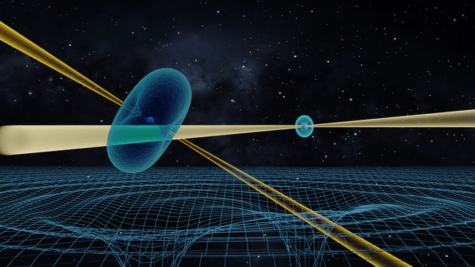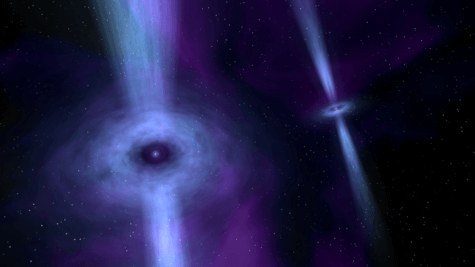
Albert Einstein. Photo: Library of Congress Prints and Photographs Division. cph.3b46036.
MORGANTOWN, W. Va. — Chalk up another win for the famous theoretical physicist Albert Einstein. A 16-year experiment which tried to challenge Einstein’s theory of general relativity has come to a not-so-surprising conclusion — Einstein was right all along.
What makes that result shocking, however, is the fact that an international team of scientists confirmed the theory using objects in space that Einstein didn’t even know existed at the time of his breakthrough. Specifically, the team studied a pair of extreme stars using seven deep space radio telescopes to examine how gravity affects the fabric of space-time.

These stars, called pulsars, are actually part of a rare double pulsar star system, with one of the stars spinning about 44 times per second and its companion star rotating about three times a second. Study authors say the motion of these two pulsars around each other makes this one of the most precise tests of gravity ever completed.
“A pulsar is a highly magnetized rotating compact star that emits beams of electromagnetic radiation out of its magnetic poles,” says Dr. Robert Ferdman of the University of East Anglia in a release.
“They weigh more than our sun but they are only about 15 miles across – so they are incredibly dense objects that produce radio beams that sweep the sky like a lighthouse.”
Despite not knowing of the existence of pulsars in the cosmos or having deep space telescopes to measure gravitational forces in space, the study finds Einstein’s 100-year-old theory predicted the team’s observations with near-perfect accuracy (99.99%).
Einstein’s theory of general relativity stands the test of time
Since Albert Einstein presented his theories on how space and time are related (the theory of special relativity) and then how gravity affects this relationship (the theory of general relativity), his peers have been trying to find a flaw in them. If anyone could poke such a hole in the theory of relativity, it would be a major discovery in the history of physics.
Researchers discovered the double pulsar system in 2003, which is contributing greatly to the study of gravity in space. The combination of these stars puts out enough energy for scientists to precisely measure the star system even from over 3,000 light years away.

“We studied a system of compact stars that is an unrivaled laboratory to test gravity theories in the presence of very strong gravitational fields. To our delight we were able to test a cornerstone of Einstein’s theory, the energy carried by gravitational waves, with a precision that is 25 times better than with the Nobel-Prize winning Hulse-Taylor pulsar, and 1,000 times better than currently possible with gravitational wave detectors,” says research leader Prof. Michael Kramer from the Max Planck Institute for Radio Astronomy in a university release.
Prof. Kramer adds that their observations not only agree with Einstein’s famous theory, “but we were also able to see effects that could not be studied before.”
“We have reached a level of precision that is unprecedented. Future experiments with even bigger telescopes can and will go still further,” Kramer concludes. “Our work has shown the way such experiments need to be conducted and which subtle effects now need to be taken into account. And, maybe, we will find a deviation from general relativity one day.”
The team published their findings in the journal Physical Review X.










